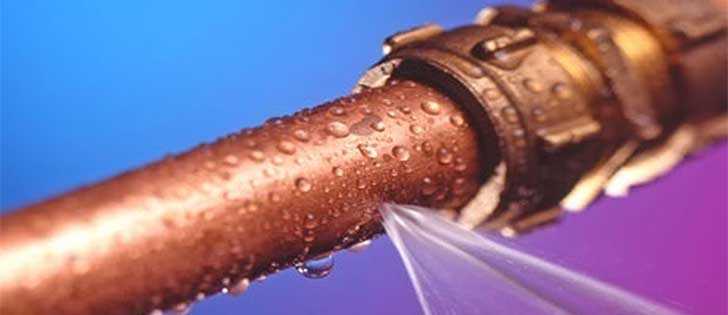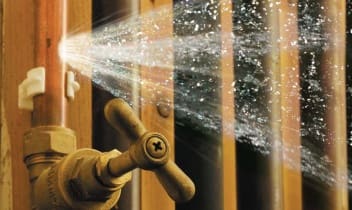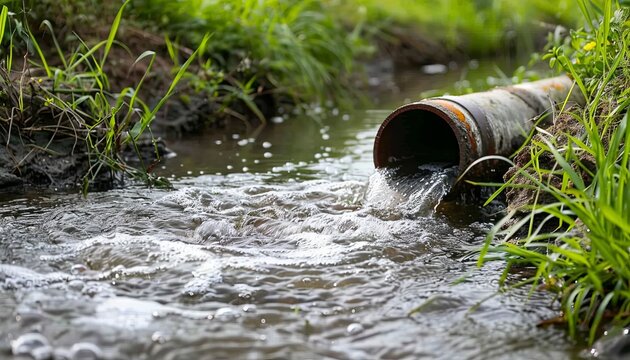How to Fix a Burst Pipe Yourself: A Step-by-Step Guide for Homeowners
Avoiding Ruptured Pipes: Necessary Tips to Safeguard Your Pipes
Protecting against burst pipelines is an essential concern for property owners, specifically during chillier months when the risk of cold is enhanced. Executing critical procedures such as appropriate insulation, regular evaluations, and preserving constant indoor temperatures can considerably minimize the probability of pipeline failure. Additionally, understanding emergency procedures gears up homeowners to respond quickly to potential plumbing concerns. Nonetheless, several are not aware of the specific susceptabilities that their pipes might encounter. Checking out these vulnerabilities can give vital understandings into securing your plumbing system successfully.
Understand Pipeline Vulnerabilities
Recognizing pipeline susceptabilities is essential for efficient pipes upkeep and preventing pricey damage. Numerous factors add to the susceptibility of pipelines to ruptureds, consisting of material composition, age, and environmental conditions. Older pipes, particularly those made from galvanized steel or polybutylene, frequently weaken in time, leading to increased danger of ruptures and leakages.
Temperature level changes can also dramatically influence pipeline integrity. In colder climates, water caught in pipelines can ice up, putting in and increasing stress on the pipe wall surfaces, which might eventually result in a burst. High water pressure can stress pipelines, especially at joints and bends, heightening the probability of failing.

Insulate Piping Properly
Appropriate insulation of pipelines is crucial for protecting against freezing and succeeding bursts during cool weather condition (burst pipe). Protecting your pipes system efficiently safeguards versus temperature level goes down that can cause pricey damages. Begin by identifying at risk locations where pipes are exposed to outdoor temperatures, such as cellars, attic rooms, and outside wall surfaces
Usage foam pipeline insulation sleeves or wrap insulation tape around these locations to give a protective obstacle. Make sure that all areas of the pipelines, specifically those with restricted heat direct exposure, receive ample insulation. Pay special focus to joints and installations, as these are much more vulnerable to cold.
When insulating, it's crucial to select materials that meet regional building codes and are ideal for the certain environment. Fiberglass insulation is often advised for its thermal resistance residential or commercial properties. In addition, consider utilizing warmth cords or tape in severe problems, which can be plugged in to provide extra warm
On a regular basis examine insulated pipelines for any signs of wear or damage, as jeopardized insulation can reduce its efficiency. By taking these aggressive procedures, you substantially lower the risk of pipe bursts, making sure a trusted pipes system throughout the winter season months.
Maintain Constant Temperature Level
A steady indoor temperature is crucial for avoiding burst pipelines during the freezing months. When temperature levels decline, water within pipelines can freeze, producing and increasing pressure that may inevitably trigger the pipelines to ruptured. To reduce this threat, property owners must preserve a regular temperature throughout their space, ideally no lower than 55 ° F(13 ° C)Using a programmable thermostat can assist handle indoor temperatures successfully, making certain that rooms with pipes stay cozy even when your home is vacant. Pay unique focus to areas that are more vulnerable to cold, such as garages, basements, and attic rooms. Keeping cupboard doors open under sinks can additionally permit warmer air from the home to circulate around plumbing.
Additionally, it is sensible to enable taps to trickle slightly during extreme cold snaps. This small flow of water can avoid freezing by reducing pressure within the pipelines. During especially extreme weather occasions, consider briefly suspending any type of nighttime setbacks on your thermostat to preserve a steady cozy environment. read By carrying out these strategies, house owners can significantly minimize the danger of pipeline bursts and secure their pipes systems versus the extreme winter aspects.
Regularly Inspect Pipes
Normal examinations of plumbing systems are critical for protecting against burst pipes and keeping total home stability. During these assessments, it is crucial to analyze visible pipes for indications of deterioration, leaks, or use.
Furthermore, checking links and joints is essential, as these factors are commonly prone to leaks. Home owners need to likewise analyze water pressure degrees, as excessive stress can strain the pipes system and boost the risk of pipeline ruptureds.
Take into consideration organizing professional plumbing evaluations at the very least when a year, specifically before winter, to ensure your system is prepared for cooler temperature levels. By being positive in your technique, you can guard your home versus the turbulent and costly effects of burst pipes.
Know Emergency Treatments
Recognizing emergency procedures is essential for each house owner, specifically after carrying out routine pipes evaluations. Being prepared for a plumbing emergency can dramatically alleviate damage and conserve expenses. Initially, situate your primary water shut-off shutoff; it is commonly located near the water meter or where the major line enters your home. Familiarize on your own with its operation, as shutting down the supply of water swiftly can avoid considerable flooding.
Following, maintain essential devices helpful. A pipes emergency kit ought to include a wrench, bettor, and towels, along with a flashlight and a container for tiny leakages. Furthermore, consider having the call info for a trusted plumbing easily available, needs to the situation escalate past your control.
If you detect a leak or ruptured pipe, right away turn off the water and inform your plumbing. Document the damages with pictures for insurance policy purposes. Recognize the indications of prospective plumbing issues, such as uncommon water stress changes or damp areas on wall surfaces
Ultimately, positive knowledge and swift action are vital in managing pipes emergencies, guaranteeing your home stays safeguarded and decreasing possible damage.

Verdict
Finally, preventing burst pipelines necessitates a multifaceted technique that includes understanding pipeline vulnerabilities, appropriate insulation, keeping regular interior temperatures, you could try here routine examinations, and knowledge of emergency treatments. By applying these necessary techniques, the threat of pipes failings can be dramatically reduced, therefore guaranteeing the durability and performance of the pipes system. Aggressive actions not just protect against possible damages yet additionally add to total water conservation and the defense of residential property.
In cooler climates, water trapped in pipelines can ice up, broadening and exerting pressure on the pipe walls, which might eventually lead to a ruptured. When temperatures decline, water within pipes can freeze, producing and expanding pressure that might ultimately trigger the pipes to burst. By executing these strategies, homeowners can considerably decrease the danger of pipe ruptureds and secure their pipes systems against the rough wintertime components.
